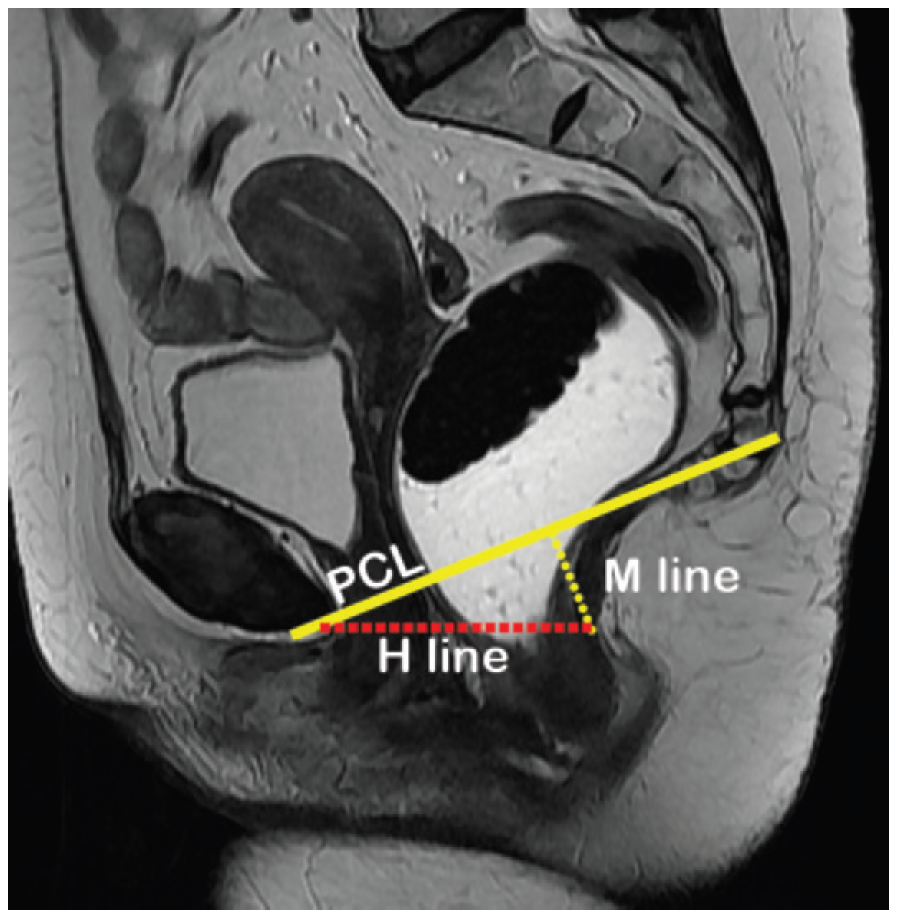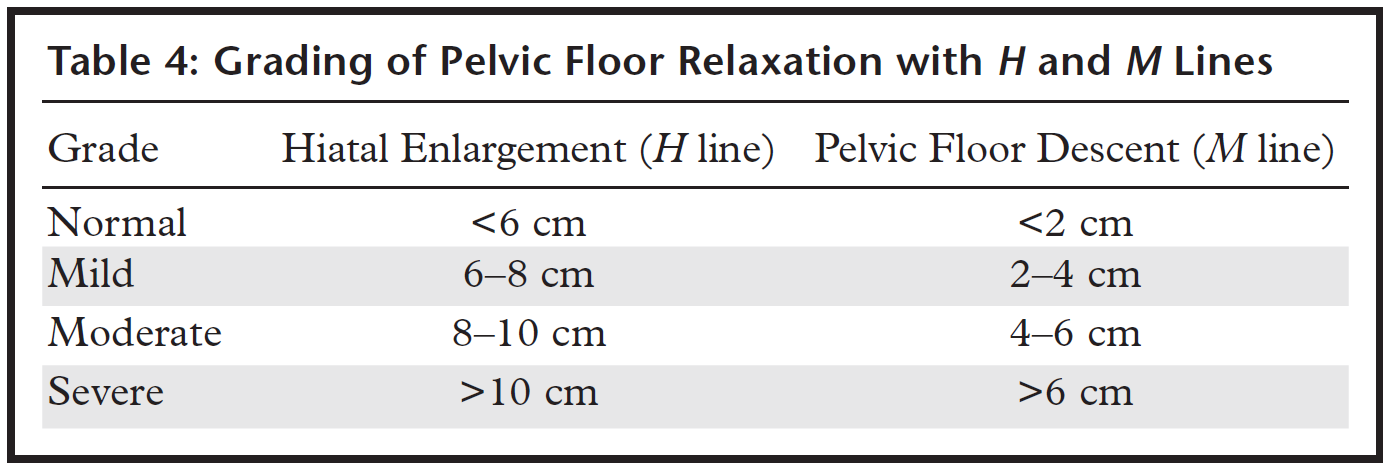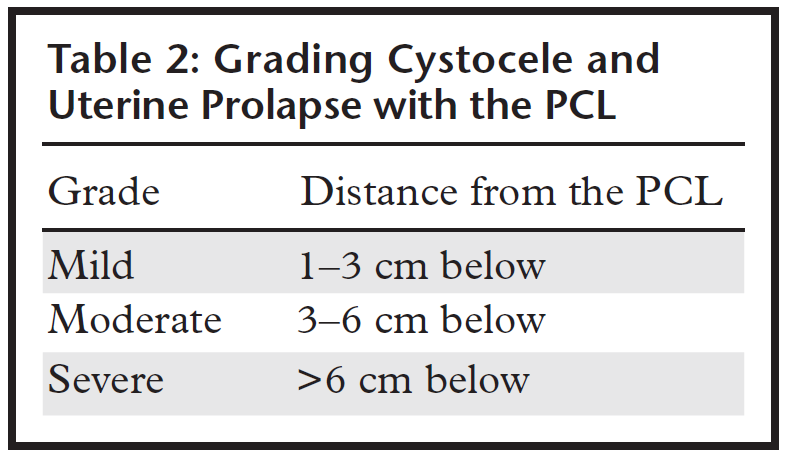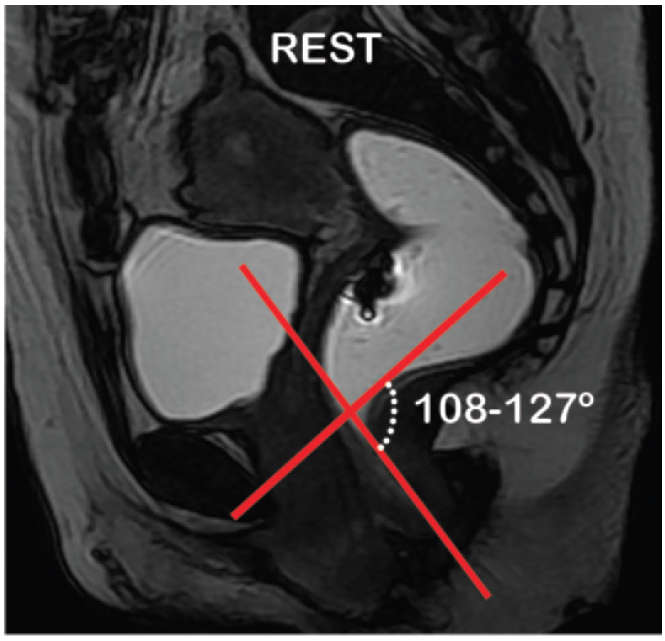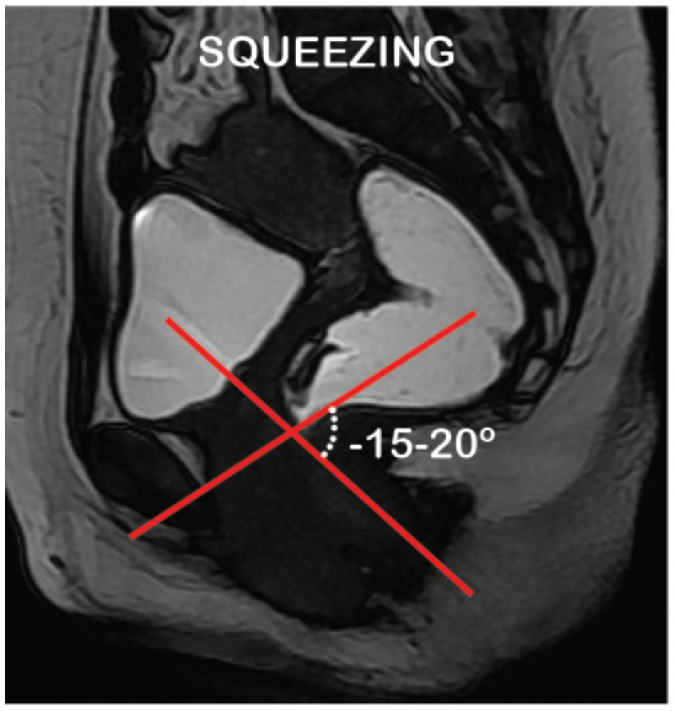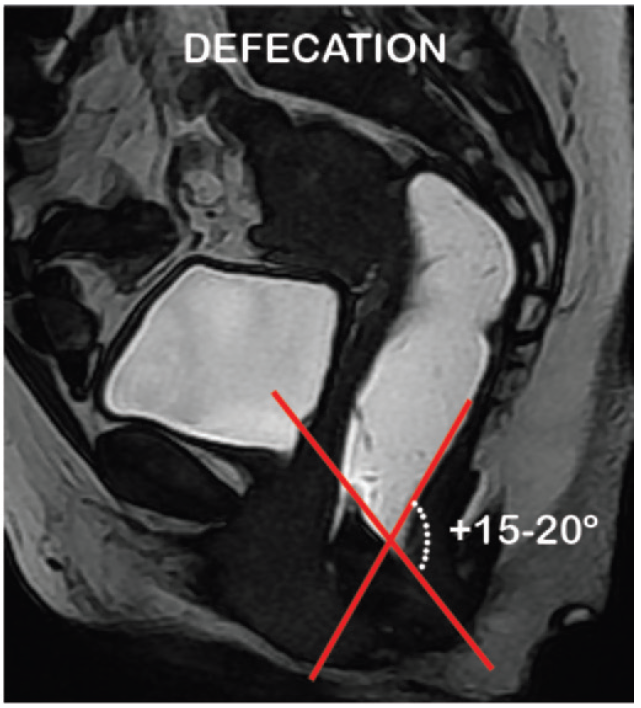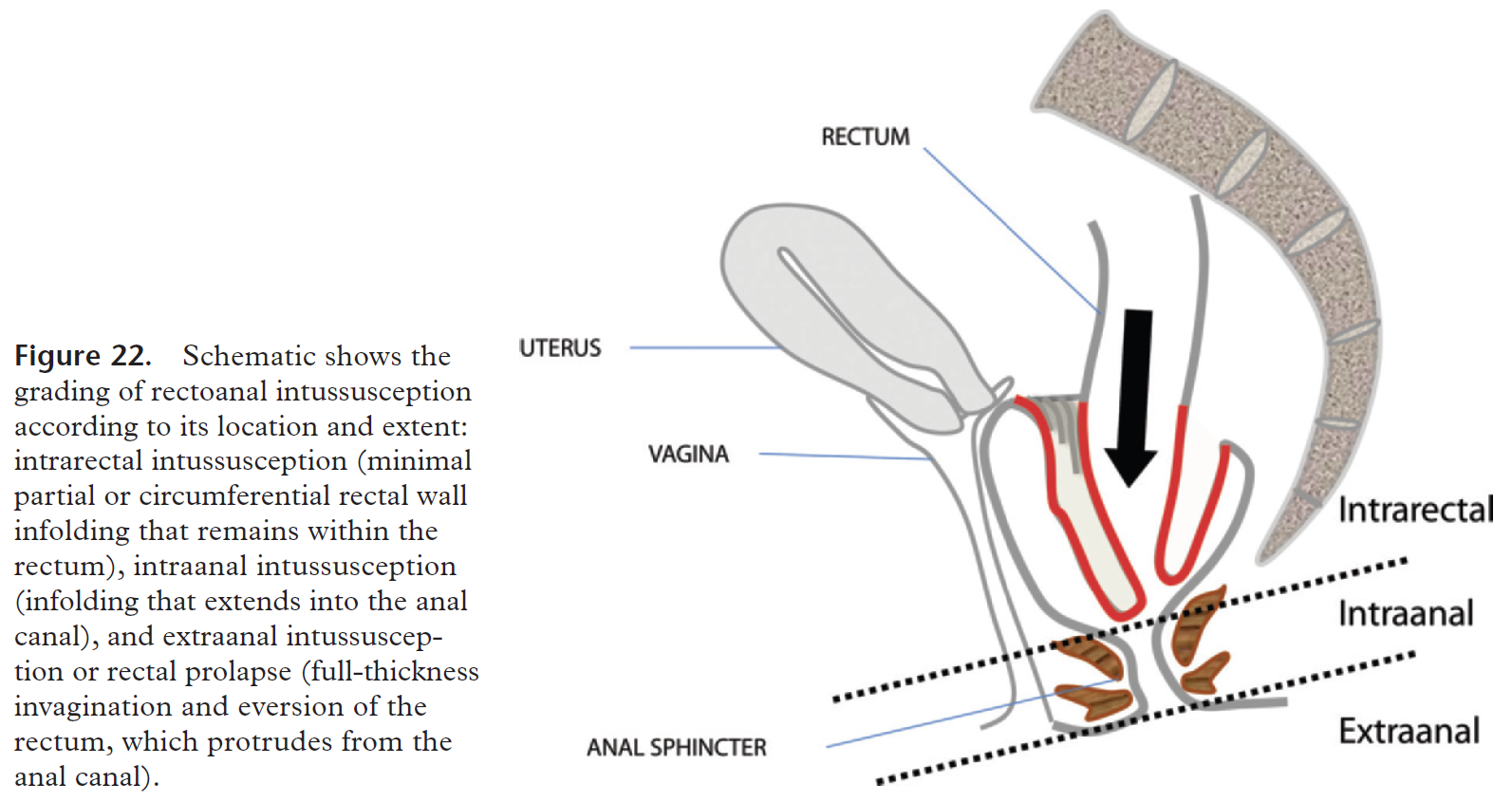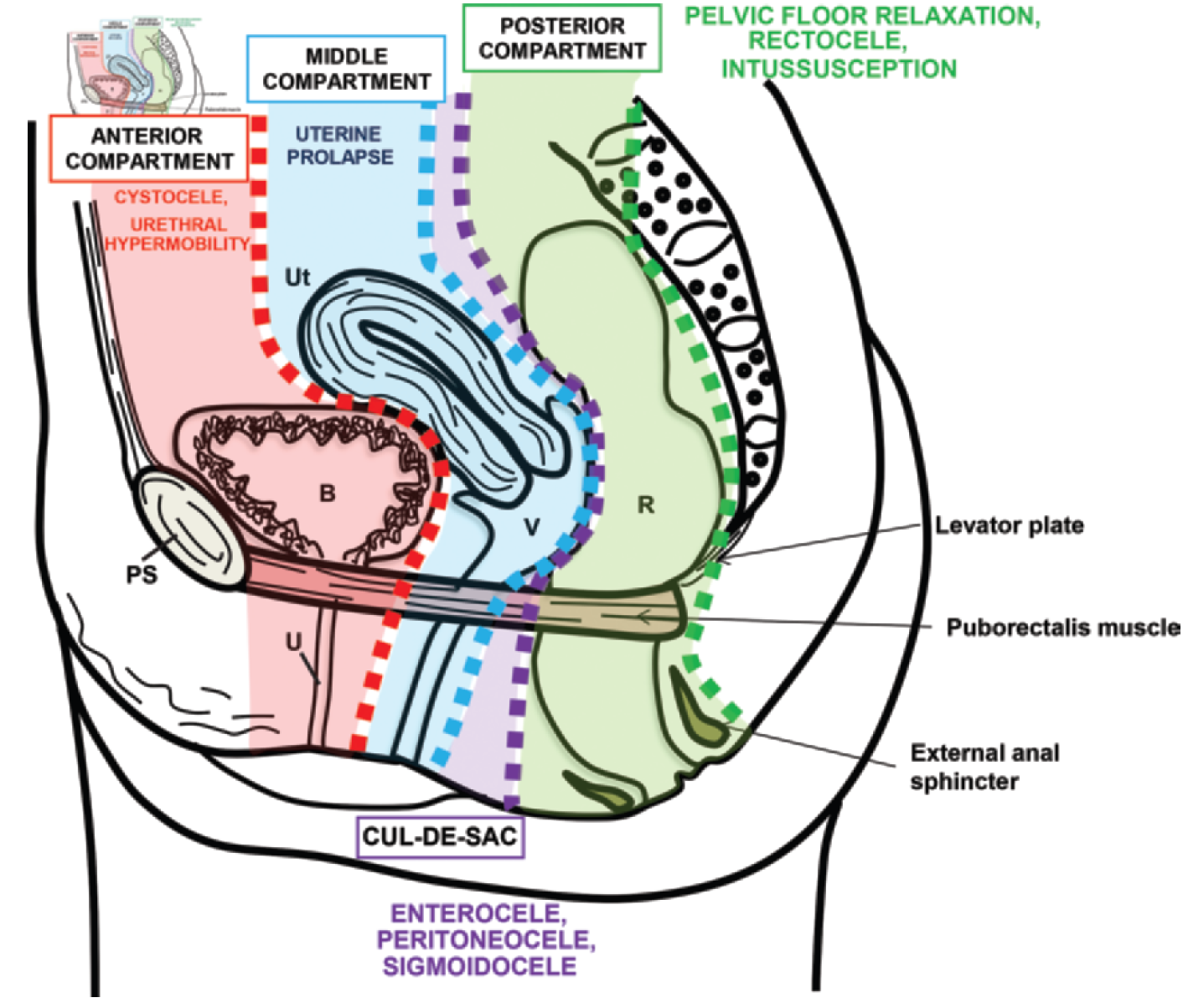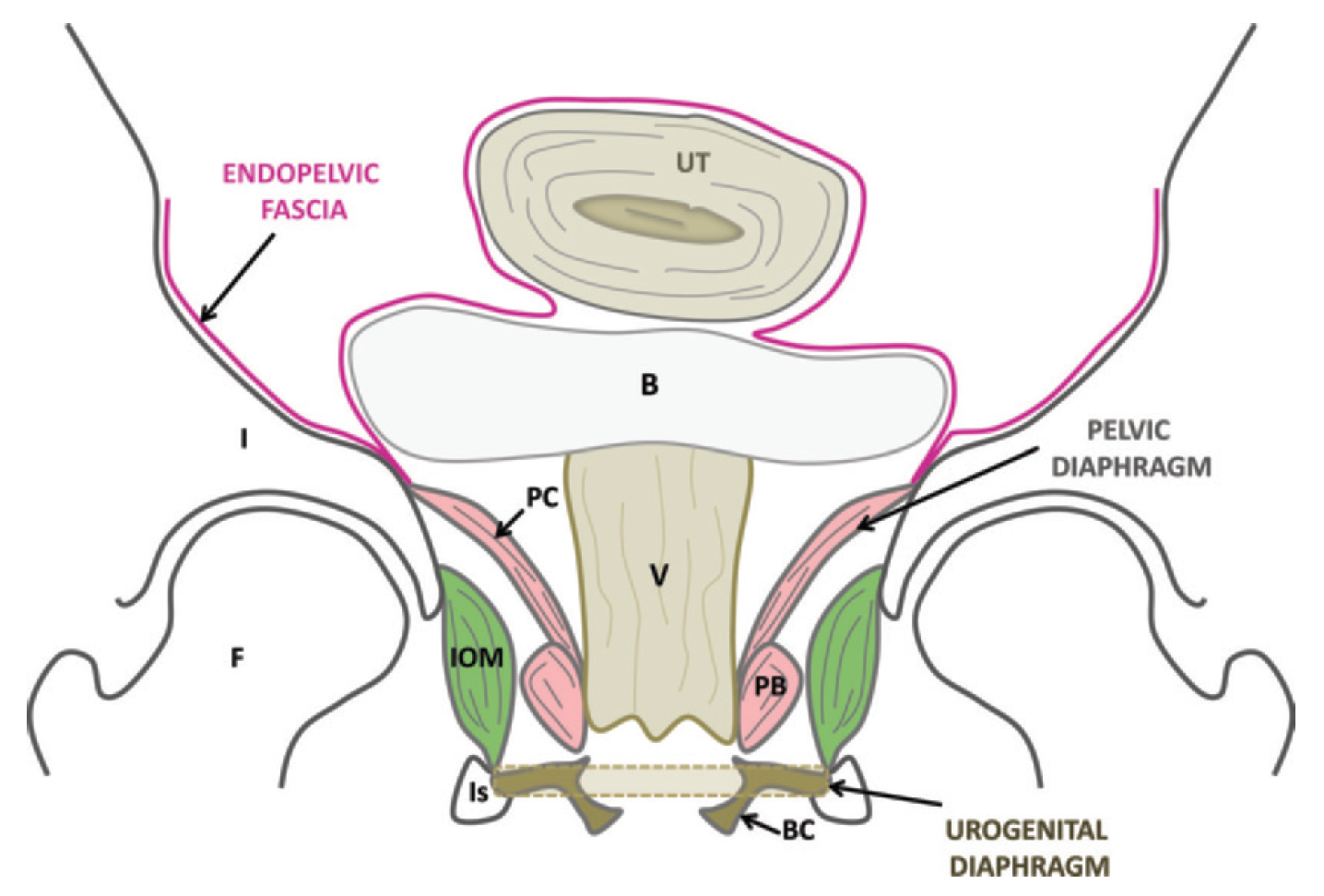DEFINITIONS
- Pubococcygeal line (PCL) extends from inferior margin of the
symphysis to the last coccygeal disc space.
- Anorectal junction is the point of taper of the distal part of the
rectum as it meets the anal canal, corresponding to the posterior
impression of the transition between puborectalis muscle and levator
plate.
- H Line (levator hiatus) - line drawn from the inferior border of the
pubic symphysis to the posterior wall of the rectum at the level of
the anorectal junction.
- M Line - vertical line drawn perpendicularly from the PCL to the
most posterior aspect of the H line.
- Puborectalis muscle forms a sling around the anorectal junction and
is part of the external anal sphincter.
- Levator ani muscle consists of the ileococcygeus, pubococcygeus and
puborectalis muscles. The ileococcygeus and pubococcygeus muscles are
best seen on coronal images. Posteriorly they fuse anterior to the
coccyx to form the levator plate.
- Rectocele - prolapse of the rectal wall > 2 cm anterior to the
expected margin of the rectal wall.
- Rectoanal mucosal intussusception - rectal mucosal invagination that
descends toward the anal canal.
- Rectal prolapse - most severe form of intussusception where rectal
mucosa protrudes through the anal orifice.
- Pelvic floor dyssynergia - failure of relaxation or a paradoxical
contraction of the pelvic floor muscles with defecation, symptoms of
constipation, manual maneuvers for defecation, thickened contracted
puborectalis.
- Endopelvic fascia (pubocervical and rectovaginal fascia) connect the
uterus/vagina to pelvic sidewalls.
- Cystocele results from tear in pubocervical fascia. Anterior
rectocele or enterocele results from tear in the rectovaginal fascia.
- Perineal body central tendon where the external anal sphincter,
endopelvic fascia, urogenital diaphragm and puborectalis muscle
insert. At the inferior-most aspect of the rectovaginal septum in
women and posterior to the spongiosus and cavernosus bodies in men.
